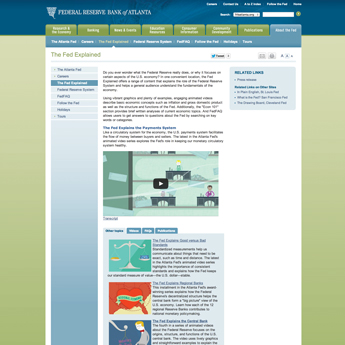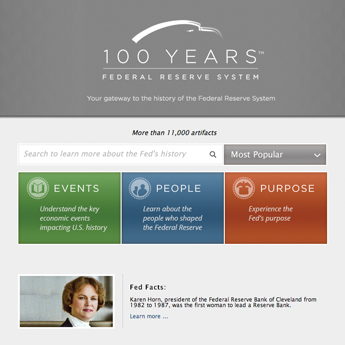Those of you who follow business and economic news know that Federal Reserve presidents regularly give speeches. These appearances are an important responsibility because they let the public know what the presidents are thinking on issues that are important in people’s lives. We are public policymakers, after all, and the public part of that job title is as important as the policymaking part.
But those speeches are more than just opportunities to tell you what is on our minds; they also offer a chance to hear from you. I have written in the past about the value of better communication when it comes to economic research and policy, but communication is a two-way street. And we policymakers have as much to learn as we have to teach.
For example, I visited Fargo, N.D., this fall to give a talk before a large business group that included everyone from business owners to bankers to retail managers and service providers, many of whom brought along a number of their employees. The speech made news, as it often does when a Fed president talks, but it’s what happened after the speech that was particularly valuable, at least for me. That was when people started asking questions, and there were a lot of them. People asked about issues raised in my talk, and they had things to say about the Federal Reserve and the economy in general. It was a spirited exchange, invigorating and informative. I always learn a great deal during these post-speech sessions, as they not only tell me what currently concerns people in the Ninth District, but often help me sharpen my own thinking about economics, and monetary policy in particular. I also gain deeper insights into how the local economy is performing and what factors are affecting the area’s economic prospects, for good or ill.
But my “speech” in Fargo didn’t end there. Following the question-and-answer session, people came up to continue the conversation one on one. Those impromptu discussions would have lasted longer if I hadn’t been scheduled to attend another event—one that was, in many ways, even more rewarding. I had the privilege of speaking with college students from around the Fargo-Moorhead area, along with their professors. Once again, the question-and-answer session was invigorating. And as a former economics professor, I must admit that it felt particularly good to stand in the front of a lecture hall once again.
In addition to these events, I also had other chances to meet with members of the business community, to connect with members of our Bank’s board of directors and to get a quick tour of Fargo’s impressive manufacturing district. So, when I say that I was in Fargo, N.D., this fall to give a talk, it was much more than that. Everywhere I went, I encountered interested people who wanted to know more about their central bank and to engage in thoughtful discussions about the economy.
I have repeated this experience in cities throughout the Ninth District over the past few months, including Marquette, Mich.; Missoula, Mont.; Bloomington, Minn.; and Sioux Falls, S.D.; as well as Eau Claire, Wis., last spring. In every case, I was called to give a speech, but I ended up doing—and learning—so much more. Again, that’s because I have had the pleasure of meeting so many district residents who have taken time from their busy schedules to listen to what I have to say and then to give me thoughtful feedback.
As I look back over my first year as president of the Federal Reserve Bank of Minneapolis, these trips around the Ninth District are among the highlights of my service. I was familiar with some of the Ninth District from my travels over the years—and stretching from the Rocky Mountains in the west to the Great Lakes in the east, it certainly is a beautiful place—but during this past year, I have also learned of the incredible diversity of the district’s economy. Mining, oil, timber, agriculture—including farming, ranching and production—financial services, technology firms involving medicine, biomedicine and digital media, as well as many service industries, are all an important part of the Upper Midwest economy.
I feel very lucky to have this opportunity to serve the public as the president of a Federal Reserve bank and especially privileged to represent the Ninth District. I look forward to giving many more talks throughout the district’s six-state region in the years to come. And, of course, when I say “giving talks,” I mean so much more.
Related Content
Related Content





